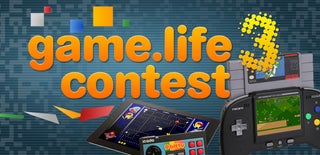Introduction: Make Your Own Atari Joystick
The Atari VCS/2600 was released in 1977. At the the time of this writing, that was 36 years ago. The consoles themselves, impressively, are pretty sturdy. Sadly, the joysticks don't fare as well. Many people resort to using Sega Genesis controllers, since they are compatible. However, I wanted to make an arcade-quality joystick for my Atari. I could go to the trouble of hunting down Atari joysticks in pristine condition, but I grew up with one. Frankly, they weren't very good. But they were simple.
Step 1: What You'll Need
You'll need a nice arcade-style microswitch controller. I got one from adafruit. You'll want a button. I also got it from adafruit. You'll want an enclosure of some sort. I had one lying around that I had picked up from Radio Shack a while back. Just make sure it's big enough. If you're good with wood you should make a nice enclosure yourself. I'm not, so I stuck with plastic. You'll also want a DB-9 cable — I salvaged one from a new incarnation of an Atari 2600 controller. I couldn't bring myself to destroy a classic one, so I took apart one that came with an Atari Flashback I got for $10 or so. The upside is that the cable is shaped to lock into an enclosure and prevent damage from pulls. Also, there's an Atari logo on it. You could make your own using an ethernet cable, one or more DB-9 plugs and hoods. You'll want a multimeter to do continuity testing.
Not pictured are some other requirements like wire strippers, soldering iron, extra wiring, a Dremel, a drill, some nuts and bolts (#10 size works ok with the joystick I'm using), etc. You'll figure it out.
NOTE: if you do use a salvaged controller cable, keep in mind that it matters where you get it from. If plan on adding a paddle (not covered here), a cable from a normal joystick will not work. Likewise, pulling one from a paddle will probably not work if you plan to make a normal joystick, though I don't have a paddle to check. This is all because the paddles use pins 5, 7 and 9 which aren't used on a normal joystick. If you're interested in making a combo controller, pin 5 is B pot input, 7 is +5V and 9 is A pot input.
Step 2: Disassemble the Atari Joystick
If you are corny like me and you want an authentic cable, remove one from an existing joystick. If you'd prefer to build your own, er, build it and skip this step.
Unscrew the sucker and open it up. The one I opened up had six wires in it: Black, Green, Red, White, Yellow and Orange. Using a multimeter, I determined which color matched up with what input. There's a couple of ways you could approach this, but I found it simplest to just put one probe on the wires' solder points and poke the other around until I found what input it was connected to. If you happen to be tearing apart the exact same controller as I did, it lines up like so:
Black -> GND
Green -> Button
Red -> Left
White -> Right
Yellow -> Down
Orange -> Up
However you determine this, write it down.
Cut the wires, disconnecting them from the controller board.
Step 3: Wire Up the Button
Next I wired up the button. Whatever button you use, make sure it's a Normally Open one. I used some IDE wires for this and used put heat-shrink rubber over it. Because I'm crazy. Anyway, solder those puppies up. The ground will be shared with the joystick itself.
One wire will go to pin 6. Ground is pin 8.
Step 4: Drill the Enclosure
This is when I decided to turn to the enclosure. I drilled a 1/2" hole for the joystick and a 1" hole for the button. Turns out it probably should have been 1.25". I was lazy and went at it with a dremel. It looks ugly here but you can't tell in the finished product.
I also cut out a chunk near the lid for the db-9 cable. I didn't do a good job here. I'm sure others can do better.
Next, fit the joystick in there and mark some holes for the bolts to hold it in place. Or be smart and whip up a printable template. I was not so smart, and my bolts did not line up in an aesthetically pleasing manner.
Step 5: Finish the Connections
How you do this next part is up to you. I went ahead and mounted everything in the enclosure. At the very least, mount the button if it's the type that snaps into place. Once the button is mounted, either mount the joystick then solder the wires or solder then mount.
Again, I used the multimeter to figure out what wires correspond with which direction on the joystick. The black wire was GND. Moving right from there, it was Left, Right, Down, Up. But don't take my word for it. All these are are simple buttons closing a connection, so it's simple to test with a multimeter.
Anyway, solder them to the correct wires from the plug. I used rubber shrink tube again to insulate and protect the solders. Use electrical tape if you don't have that.
The pins are:
1 Up
2 Down
3 Left
4 Right
8 GND
Step 6: Close Up and Test
Do some continuity test then close it up. Plug it into your Atari and have some fun.

Runner Up in the
Game.Life 3 Contest













